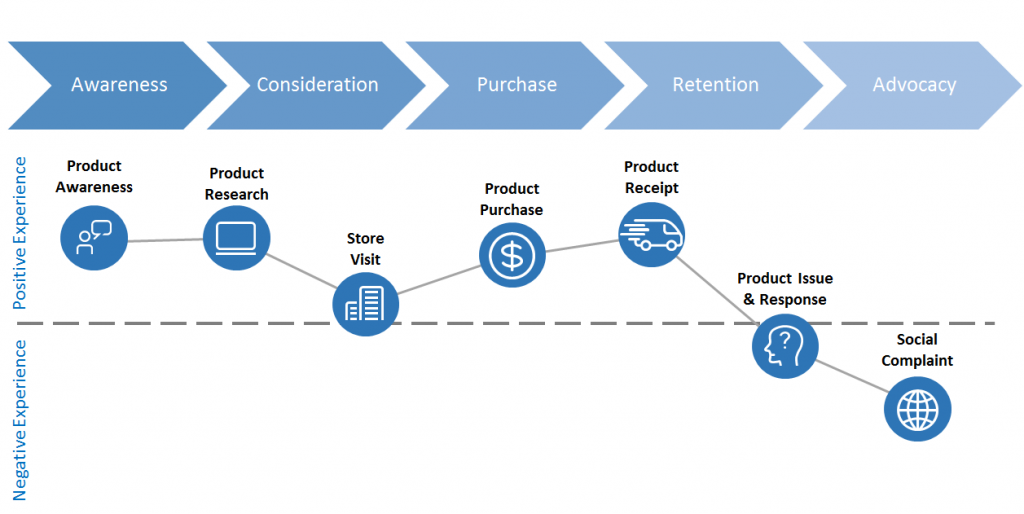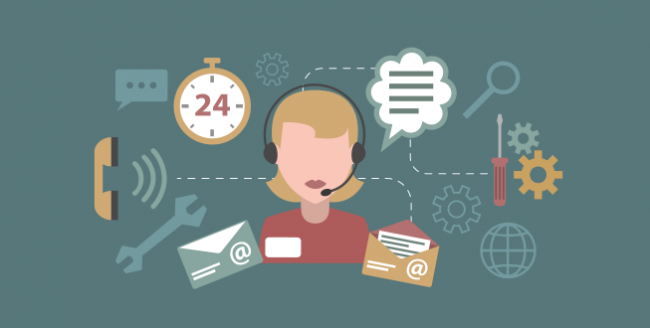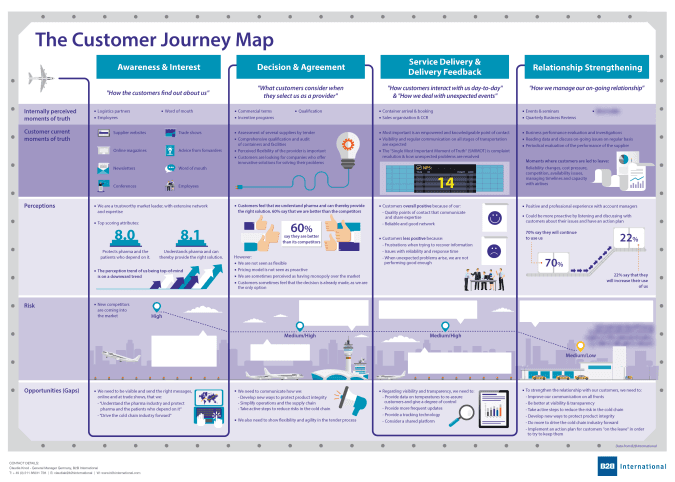5 Tips for Perfecting the B2B Customer Journey
More and more companies are becoming aware that their customers are their greatest asset. If customers don’t buy their products and services, they will have no business at all. People with a good customer experience are more likely to spend more on products and be more loyal to the company.
Improving the customer experience at every stage of your journey is important for your business as positive customer experiences can catalyze a loyal customer base, while negative experiences can impact prospects even before they interact with your business.
People who switch to another provider or brand are more likely to do so due to low-quality service and may inform their peers about their poor experience as well. The key to a successful B2B customer journey is dedicated teamwork, world-class customer support, and, most importantly, strategic planning.
You need to invest in the customer journey to become an experience-driven company. i.e. provide customers with a personalized omnichannel experience so they can expect the same level of service regardless of the channel. Understanding the customer journey allows B2B companies to stay one step ahead of their competitors and guide their customers along the way.
In this article, I will explain how the B2B customer journey works and give you tips on how you can improve your CX.

What is a customer journey?
The B2B customer journey is a collection of interactions that customers have made with B2B companies from the first encounter until after the purchase has been made.
The post-purchase care a customer receives affects their perception of your business and influences their decision to continue doing business with you. Post-purchase communication is a way to strengthen customer loyalty and optimize the experience.
In the B2B purchasing process, it’s rare for only one person to make decisions. People involved in the purchasing process often have different roles and responsibilities, so they have different needs and expectations. That is why it is important to focus on customer service to provide a great customer experience for all stakeholders involved.
According to a Microsoft Dynamics survey, 95% of consumers believe that B2B customer service is essential to maintaining loyalty to the enterprise. As a result, B2B customers’ traditional thinking is shifting toward simplifying the process so that users are immediately inclined towards purchasing your products and services.
What are the stages of a B2B customer journey?

A typical B2B Customer Journey has the following phases:
- Awareness: The moment a user first discovers your brand, product, offer, etc.
- Consideration: They are interested, but they are not ready to buy now. Perhaps they are comparing you to a competitor or waiting for a special offer.
- Conversion: When the user finally decides to buy from you.
- Loyalty: Users who make regular purchases from you and find it difficult to go elsewhere.
- Advocacy: A user who actively recommends you to potential buyers.
The customer journey is an important part of any business, and it’s very essential to understand how prospects reach the brand. That way, you can be sure you’re doing everything you can to turn your prospects into buyers
5 tips to perfecting the B2B customer journey

- Get to Know Your Customers
Understanding your customers is the key to good service, which in turn leads to strong customer relationships and new sales through positive reviews. You also need to leverage the wealth of data available to learn which industry your customers belong to, their geographic focus, and which stage of the journey they are in. Without this basic understanding, you will not be able to offer your customers the experience that will make them stick around. - Use Customer Service Technology
Businesses today need to leverage customer data to automate as many small tasks as possible. You can always connect with your customers using chatbots and even use email automation and survey tools to gather responses after they take certain actions in their journey. - Optimize the Accessibility and Usability of Your Website
A UK study found that web accessibility issues cause losses worth £12 billion in e-commerce sales per year. Therefore, it is important to follow web accessibility guidelines to improve the user experience of your website.
By adopting a customer-centric strategy, B2B companies can improve the interface of their website to create a more user-friendly experience. It’s also an effective strategy for communicating, attracting, and persuading more of your target audience to stick with your brand.
- Gather Customer Feedback
Customer feedback is information, insights, issues, and contributions that the community shares about their experience with a business, product, or service. This feedback can improve the customer experience and make a positive difference to any business. Customer feedback is important because it serves as a guide to helping your business grow. Among the pros and cons are gems that make it easy to fine-tune and customize the customer experience over time. In short, feedback is a way to keep your community at the center of everything you do. - Create an Effective Customer Journey Map
The customer journey map is a visual representation of your customer journey. It helps you tell the story of your customer’s experience with your brand across all touchpoints. Whether they interact with you through social media, email, live chat, or other channels, you can visualize your customer’s journey so you can understand how to interact with them in the most effective manner. This process also helps B2B business leaders gain insights into common customer issues. This allows you to better optimize and personalize your customer experience.
The Customer Journey Map allows business owners to understand and truly empathize with their customers’ problems. By shifting the focus to the customer’s perspective, the brand can better understand consumer needs and needs and create a more effective and satisfying experience for them.

Track your customer journey with HockeyStack
Today, customers are looking for a seamless buying experience. But how can you provide that when you don’t know what’s wrong with your current process?
Tools like Hockeystack allow companies to dig deeper into the customer journey by segmenting users by behaviour, understand which marketing channels are most likely to convert users by unifying marketing and product data and create dashboards to track how revenue changes over time.
With this information, you can optimize experiences across multiple touchpoints to ensure users are satisfied with their entire journey.
For example, you can create a revenue dashboard to measure different metrics. This data helps identify the channels that have the most valuable customers.
You can also create surveys to learn more about common issues your customers are facing and use this data to improve the customer experience for increased MRR.
Allowing users to zoom in on each stage of the funnel, HockeyStack offers step-by-step journey analysis for more informed decision-making.

A well-thought-out business-to-business customer journey can strengthen long-term relationships with key B2B buyers. Some tips, such as analyzing customer inquiries and behaviours, and using data visualization to dive deeper into your personalized customer journey can lead to a more positive experience.
One way to provide better customer interaction is to take the buyer’s point of view and analyze what issues are affecting the buyer. Always make every effort to provide excellent customer service using tools such as live chat, CTA email, reviews and accessible support links. By gaining a deeper understanding of customer behaviour, you can not only understand the return on investment, but also design customer experiences that deliver results.



